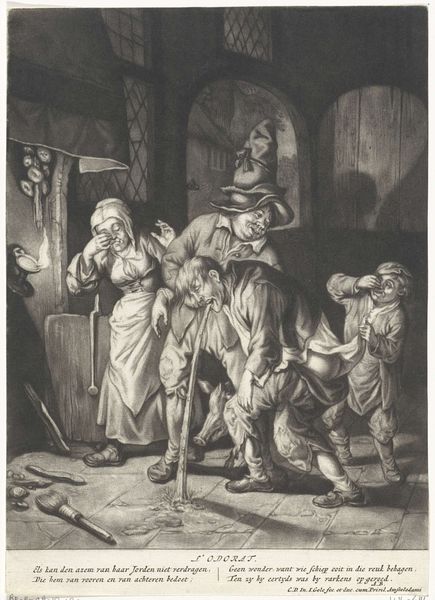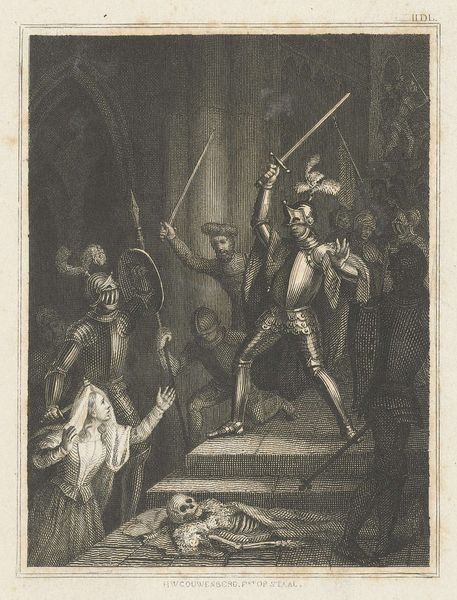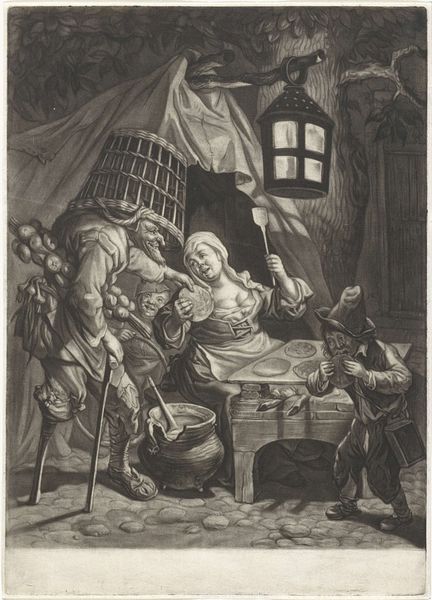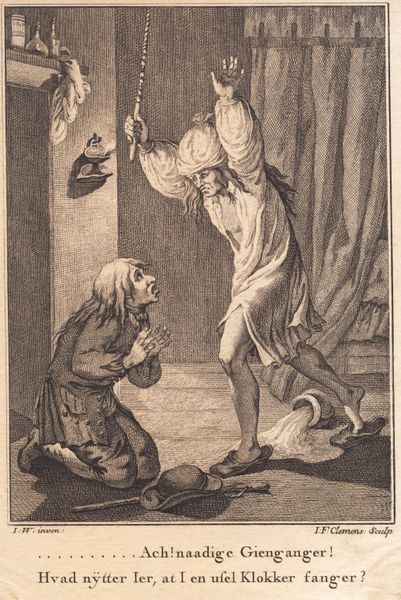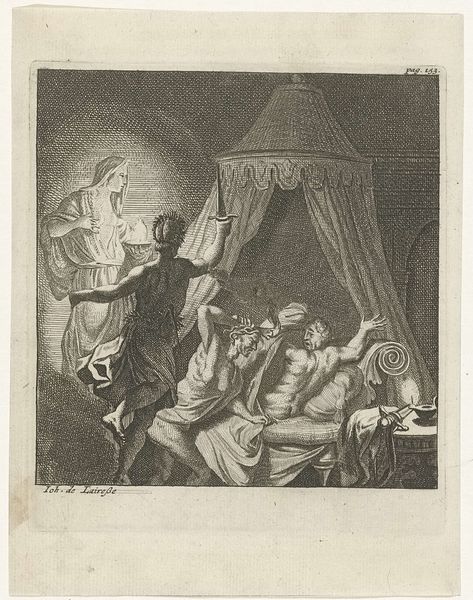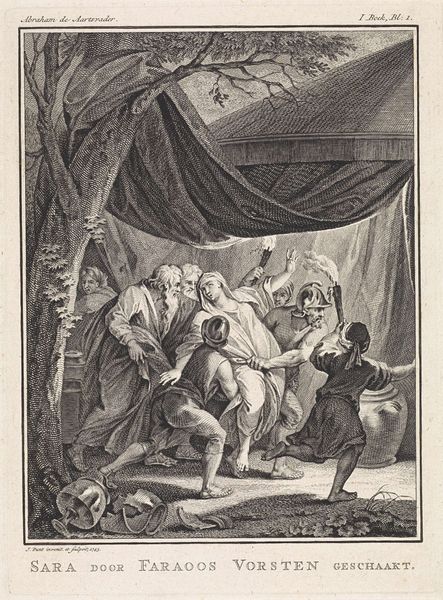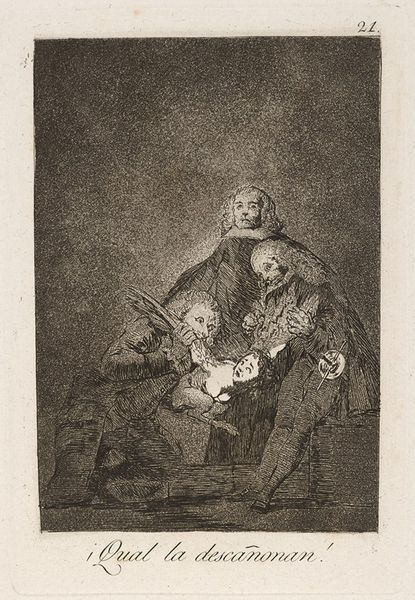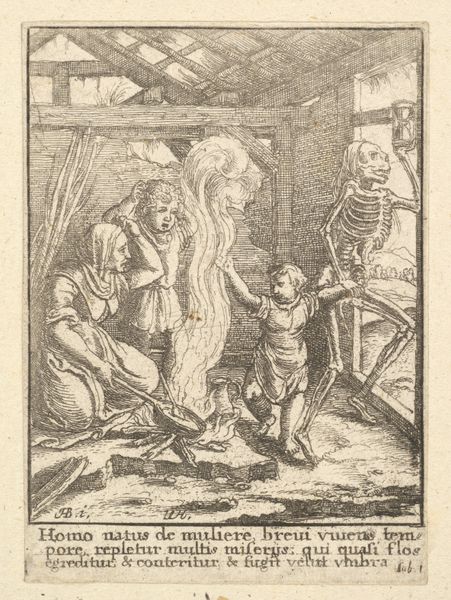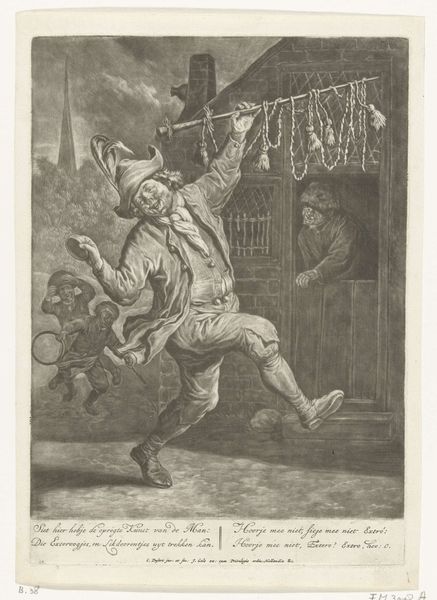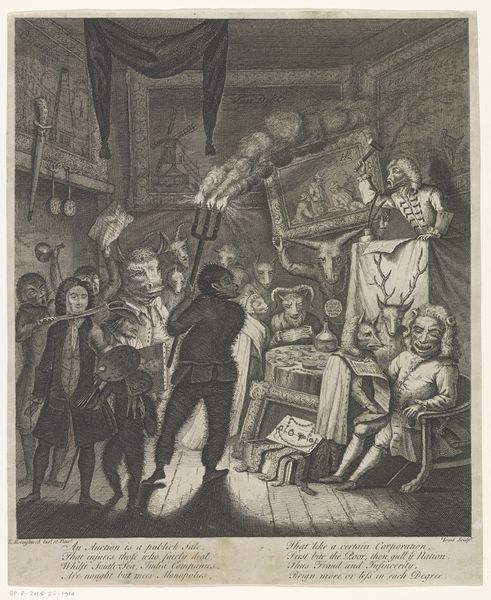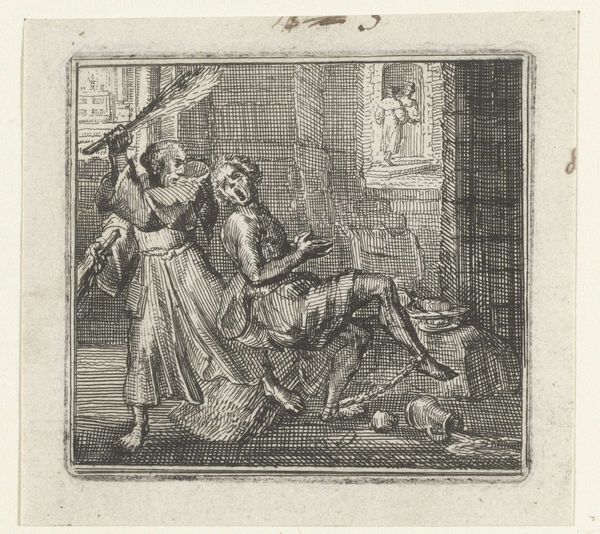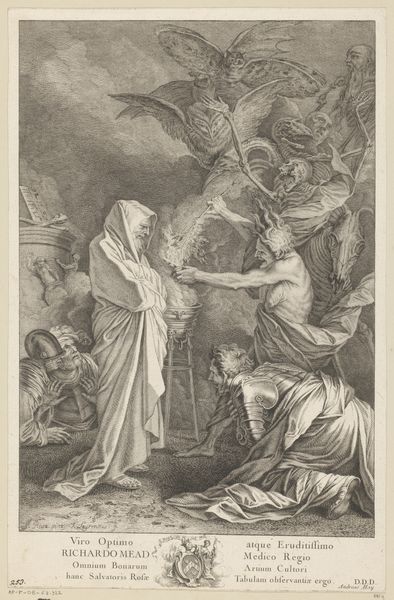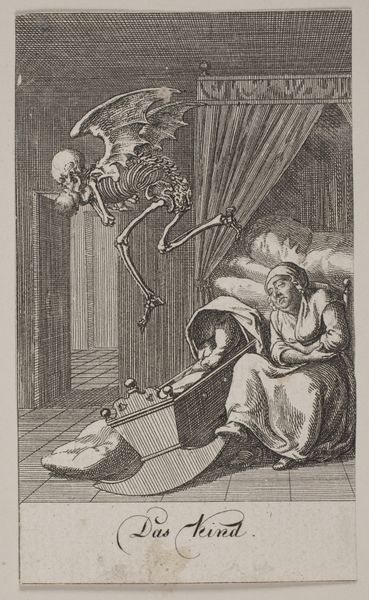
Ontwerp voor het titelblad van de klucht Den Bedrogen Bedrieger 1683 - 1733
0:00
0:00
drawing, watercolor, ink
#
drawing
#
narrative-art
#
baroque
#
watercolor
#
ink
#
watercolour illustration
#
genre-painting
Dimensions: height 143 mm, width 83 mm
Copyright: Rijks Museum: Open Domain
Editor: So, this is Bernard Picart’s “Ontwerp voor het titelblad van de klucht Den Bedrogen Bedrieger,” made with ink and watercolor sometime between 1683 and 1733. It has this dark, theatrical feel, almost like a stage setting, but I’m not sure what to make of the characters and the action. What do you see in this piece? Curator: What immediately strikes me is how Picart uses the theatre—both in subject and style—to critique societal roles. It is explicitly Baroque in its embrace of drama, but it also speaks to the societal obsession with appearances, deceit, and the roles we play in public versus private. The title itself, referring to a "deceived deceiver," suggests an inversion of power. How might the seemingly simple image of a comedic play’s title page reveal power dynamics at play within the society it reflects? Editor: That's interesting. So, the masked figure grabbing the man… it’s not just part of the play's scene? Curator: Precisely! Consider the implications of the masked figure's agency, possibly challenging the authority of the central, 'deceived deceiver'. The composition subtly implies a subversion of traditional hierarchies, resonating with the political and social unrest of the period. Think of how the figure with the candle illuminates the deception, embodying a force that challenges power dynamics. How does that candle implicate the people in the shadows? Editor: It's like everyone is complicit in the charade. The Baroque style reinforces the message... all the world’s a stage. Curator: Indeed! Picart utilizes the genre scene not merely for entertainment but as a critical mirror reflecting back the contradictions and moral ambiguities inherent in his world. The play is a space of unfettered political thought – do you think that is still valid today? Editor: I think that perspective really transforms how I see it, from a simple illustration to a complex commentary on power and identity. It makes the piece so much more relevant. Curator: Absolutely, and that's how art history continues to speak to contemporary issues.
Comments
No comments
Be the first to comment and join the conversation on the ultimate creative platform.
